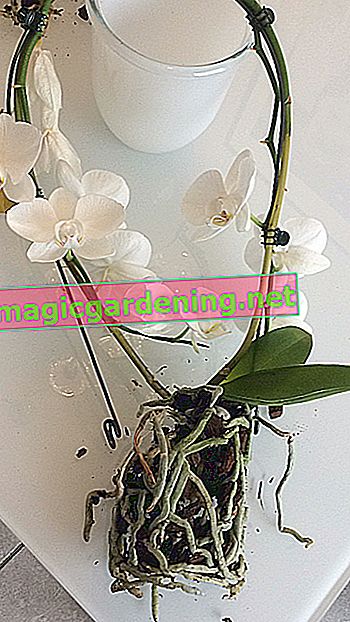
Modify location and maintenance easily - this is how it works
When an orchid has wilted, it either goes into hibernation or, for a short time, draws fresh strength for a renewed flowering. During this rest phase, you can use simple methods to make valuable preparations to motivate the exotic plant to sprout fresh. How to do it right:
- Maintain a light to partially shaded and warm location during the day
- If the orchid has bloomed, lower the nighttime temperatures by 5 degrees, but not below 16-18 degrees Celsius
- Water more sparingly or dive less often
- Do not fertilize during the resting phase
- The supply of nutrients starts again parallel to the fresh budding
also read
- Orchid leaves new leaves on the stem - that must be done now
- Is your Vanda orchid not blooming? - This is to be done now
- The ranunculus has faded - what now?
The water requirement regularly drops to a low level once an orchid has wilted. In contrast, the beauty of the tropical flowers still wants a high humidity of 60 percent and more. So spray the plant every day, even after it has completely bloomed.
Do not prune withered orchids too quickly
If a single flower has wilted, you can pluck it off with confidence. After the entire inflorescence has wilted, the pedicel or the pseudobulb must not be cut off prematurely. The same premise applies to the leaves. Do not cut shoots or leaves until they are yellow, brown, and dry.
As long as part of the plant is still green, the scissors are not used. For example, the Phalaenopsis has the potential to sprout fresh from an old flower stem and to bloom again. Sometimes it even produces kindels that you can use for propagation.
Repotting awakens the desire for new flowers
At the end of the flowering period, there is the best opportunity to revitalize a tired orchid by repotting it. This important measure is on the maintenance program at least every 2 to 3 years when the plant has withered. Please use special, coarse orchid soil and a transparent culture pot. A 2 cm high drainage made of expanded clay (€ 17.50 at Amazon *) prevents waterlogging. So that the aerial roots are smoother, immerse the root network in soft, room-warm water beforehand.
Tips
The importance of water quality is often underestimated in the care of orchids. The demanding flower from the rainforest needs just as much water to thrive vitally and healthily. If an orchid is regularly watered with calcareous tap water, it reacts with growth depression or, in the worst case, dies. It is better to pamper the proud flower diva with collected rain or filtered tap water.








